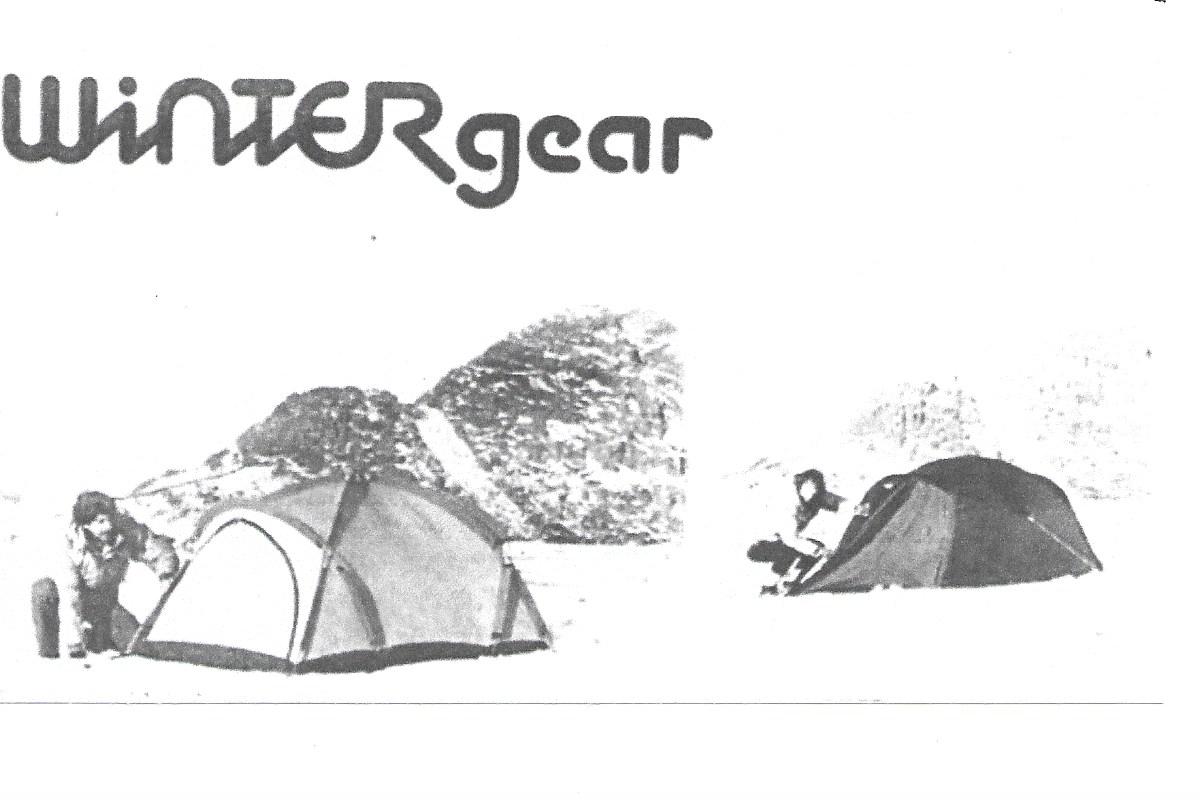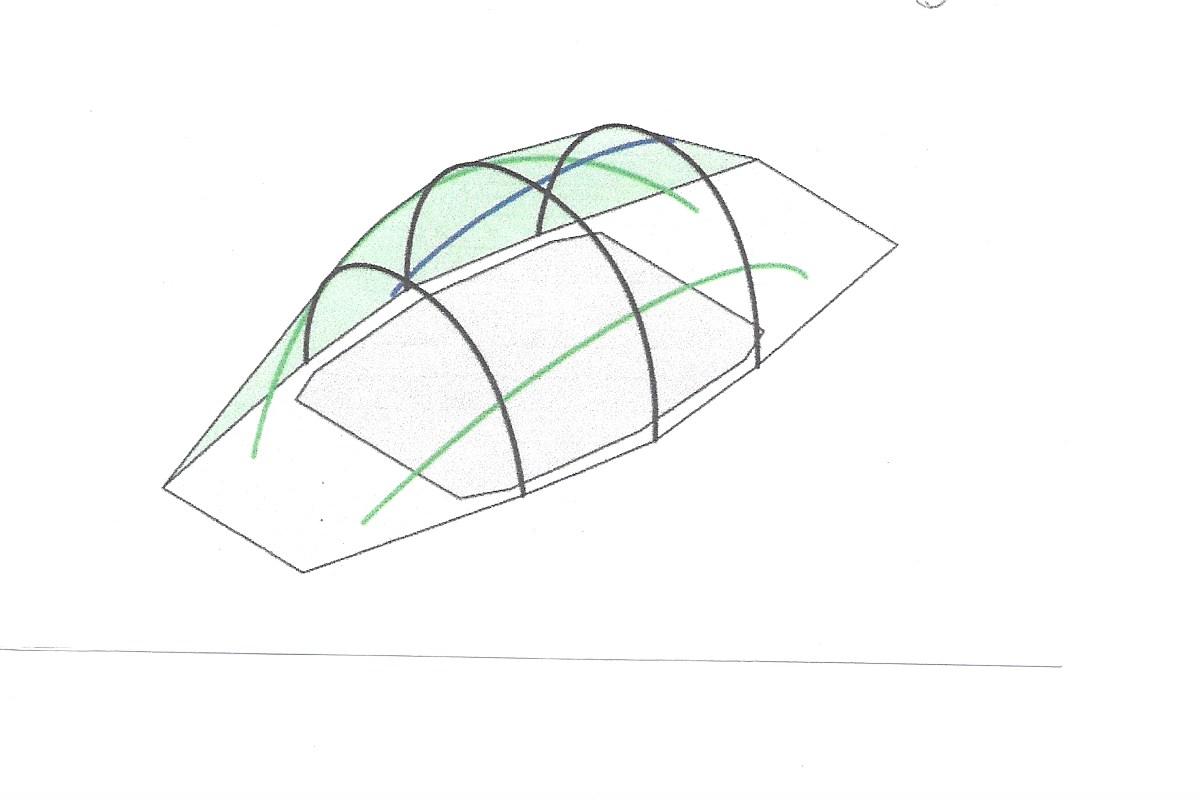Topic
Quadratic tent experiences? does it match the Caffin criteria?
Forum Posting
A Membership is required to post in the forums. Login or become a member to post in the member forums!
Home › Forums › Gear Forums › Gear (General) › Quadratic tent experiences? does it match the Caffin criteria?
- This topic has 32 replies, 12 voices, and was last updated 5 years, 9 months ago by
 Sam Farrington.
Sam Farrington.
-
AuthorPosts
-
Apr 8, 2019 at 9:29 am #3587643
“The Snow Cave is a 3-pole tunnel tent, quite standard. 3-pole tunnels are far more capable of handling wind and snow than 2-pole tunnels or tarps or pop-ups. The middle pole not only makes the tunnel stronger, but it cuts down the unsupported fabric span immensely.”
Hi Roger
It’s actually a four pole tent – three transverse and a ridge pole that goes from the front vestibule to the rear vestibule. As such it’s not a standard tunnel tent because it’s free standing – as I said, once the ridge pole is in you can pick it up and move it around just like a dome. It also makes it very strong under a snow load, by all accounts.
Apr 8, 2019 at 9:42 am #3587645Interesting.
Mind you, in my experience, that ridge pole does nothing except allow you to pick the tent up and move it around.
As for making it strong under a snow load – you can do exactly the same thing with 1 g of internal guy ropes plus good lengthwise tension.
I make my own tunnels, as you probably know, and I have never seen the need for a ridge pole.Has the Council improved the toilets at ‘Piles? The walls were hessian when I was last there.
Cheers
Apr 8, 2019 at 10:34 am #3587646The last time I was at the Pines the toilets were fine – standard Parks ones.
Apr 8, 2019 at 4:33 pm #3587687“Now if they could tie the “side poles” to the arch poles then you may have a more rigid structure for spreading stress in high winds.”
Hi Eric and Ross
Just to clarify a few things about the Quadratic Tent design:
The side poles are already secured firmly to the “arch poles”. The side poles run in sleeves in the outer tent (fly), all the way between the three “arch poles”. There are also Velcro ties and tension straps that firmly fix the arch poles to the end poles where they cross. The poles cannot and do not move independently, even in strong winds. The poles are mutally supporting; the forces are shared / transferred between the poles.
More generally (and repeating some points from earlier in the thread):
The side poles and top pole are optional, and are sold separately. When the optional poles are not used, the tent is a traditional three pole tunnel tent, with all the pole sleeves in the outer tent (fly).
As well as the optional side and top poles, there are two external guy points per side per “arch pole”, internal guys are possible with or without an inner tent, and double-poling is also possible. All these features can used separately or in combination as desired. It is up to the end-user to decide what is best for the trip and the weather they experience.
The outer and inner tents available so far were not developed for the ultralight market, unsurprisingly they use heavier fabric than many ultralight products.
I hope this information helps,
Will from The Theory Works.
Apr 13, 2019 at 5:46 am #3588552Roger Caffin’s post of 8-3-18 amply demonstrates that of the various ways to add wind resistance to a tunnel tent, side guylines with securely placed stakes trump them all. I think this might apply to most rectangle-shaped tents with front entries; that is, entries on the shorter side of the rectangle.
But side guylines can be a lot or work, especially on ground that is either too loose or too rocky to securely hold a stake. And why go to the bother, if the tent, anchored at its corners, provides enough wind resistance to meet anticipated weather, as is very often the case.
So there remains the question of whether without side guys, the Quadratic tent improves wind resistance over other designs. In a recent thread begun by Eric B. entitled, AN OUTDATED TENT DESIGN, Geoff C. posted an image of a ‘geodesic’ tent:
https://backpackinglight.com/forums/topic/an-outdated-tent-design/

I think the image is clear enough to provide a clear idea of the tent’s pole structure. The pole structure of the Quadratic tent is more complex, but a fairly clear diagram is provided on that tent’s website:

I spent some time comparing the pole structures of the two tents, looking particularly at the pole crossings, and evaluating whether compared to a tunnel tent without pole crossings, how much resistance the crossings add against winds striking the tent from either side. It seemed readily apparent from the above diagram that pole crossings on the side hoops of the Quadratic tent would add little resistance, as not much force is needed to prevent the hoops from being pushed outward should high winds threaten to blow the tent sideways, possibly fracture one or more of the three main hoop poles of the tunnel, and produce a flattened tent. And while the side hoops appear anchored somehow to the tent at the floor, when they are forced outward, there is little that appears to prevent their ends from pulling upward and allowing the side hoops to be pushed out even further.
The Winter Gear tent, on the other hand uses less poles thus less weight and less pole crossings, and all the poles that cross are hoops running over the tent’s entire width, and thus reinforce each other against lateral wind forces.
I don’t think it is enough to say that the Quadratic’s poles are anchored against movement at the points where they cross, as that will be the case with any tent that is designed to effectively use pole crossings to increase wind resistance.
While the Winter Gear design may not be a true ‘geodesic,’ some might call it that in order to place it in a different category; but it uses less poles than the Quadratic, and along with its increased wind resistance, can be built lighter. Compared to a Quadratic, I would be much more comfortable taking a 4 hoop Winter Gear tent into high open terrain, and would still have the option to use sideguys if surprised by hurricane-like winds. And I don’t think it would be that much more difficult than a tunnel to pitch in high winds, especially if the poles can be inserted in their sleeves and anchored while the tent is still on the ground, and then like a tunnel, can be staked at one end and raised with one motion.
It was not easy trying to find a current version of the Winter Gear tent. On most of the offerings, the front and rear hoops are completely separate from the center hoops that cross on top, and do not cross any portion of the center poles. Something remotely like it is sold by REI:
https://www.rei.com/product/136247/rei-co-op-arete-asl-2-tent
But it is a six lb. tent, and incorporates pole crossings to reinforce the sides only on the front end of the tent, but not at the rear, which looks like the designer left the tent on the drawing board and forgot to come back and complete it. Perhaps someone will be able to find something like the Winter Gear on the current market that is light enough to consider for BPL. Otherwise, it would be quite a challenging MYOG project to reproduce it in lightened form. And if the tent is to be intended to withstand high winds, and Roger’s guidance is followed, it would be necessary to make the Winter Gear inner become a waterproof outer, and construct a breathable inner to clip inside.
Looking for an ideal tent on the current market reminds me of an old story in New England of travelers seeking directions being told, “You can’t there from here.” Hope to get around to building something that can readily be duplicated by packers with basic sewing and construction skills.
Apr 13, 2019 at 11:21 am #3588561https://www.terra-nova.co.uk/tents-and-spares/all-tents/quasar-tent/
Hybrid tents are strong and stable but they are not light
Apr 13, 2019 at 6:26 pm #3588602@scfhome I trust you tested the Quadratic in a wind tunnel, right? same for the Wintergear geodesic, right? because in theory, theory and practice are the same. In practice, they are not. Keep in mind the Quadratic admits what Roger recommends for atrocious weather: internal guy lines, which might be enough, over and above extra poles (though they would require a modicum of awareness when inside the tent).
Also, a geodesic pitched inner first, then fly over in? is that a form of punishment?
Apr 14, 2019 at 3:32 am #3588674Don’t think sarcasm of posters is helpful to BPL readers. Am content with readers each making their own evaluations of my comments.
-
AuthorPosts
- You must be logged in to reply to this topic.
Forum Posting
A Membership is required to post in the forums. Login or become a member to post in the member forums!
Our Community Posts are Moderated
Backpacking Light community posts are moderated and here to foster helpful and positive discussions about lightweight backpacking. Please be mindful of our values and boundaries and review our Community Guidelines prior to posting.
Get the Newsletter
Gear Research & Discovery Tools
- Browse our curated Gear Shop
- See the latest Gear Deals and Sales
- Our Recommendations
- Search for Gear on Sale with the Gear Finder
- Used Gear Swap
- Member Gear Reviews and BPL Gear Review Articles
- Browse by Gear Type or Brand.





